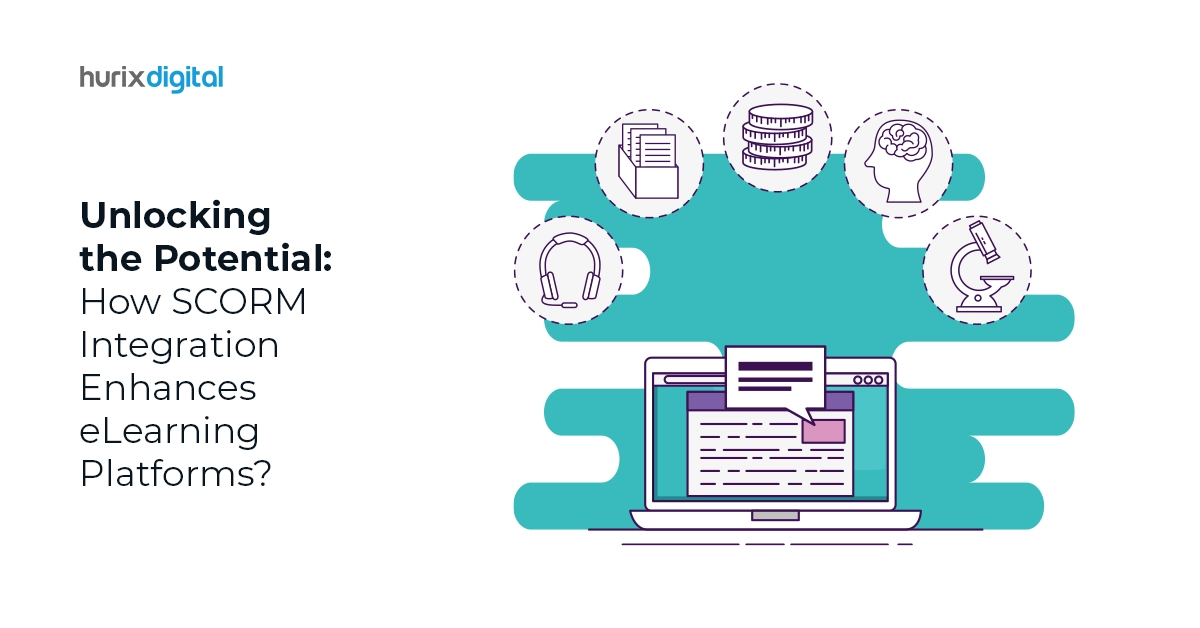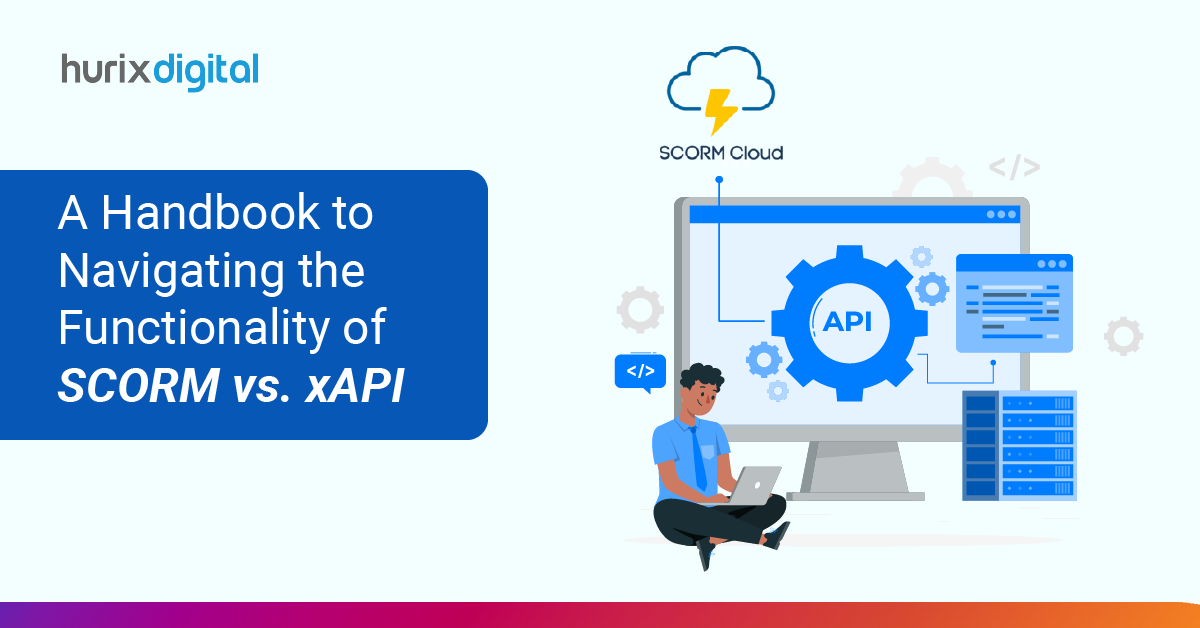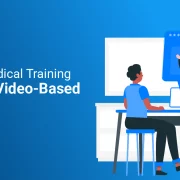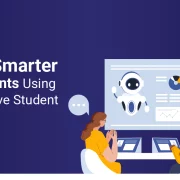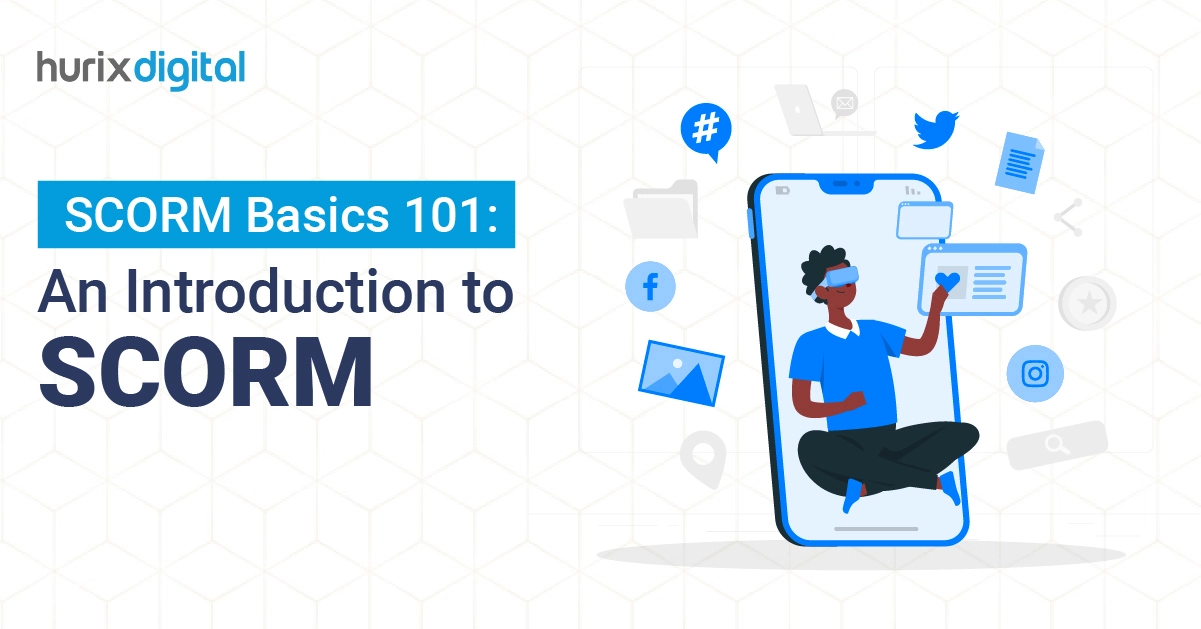
SCORM Basics 101: An Introduction to SCORM
Summary
This blog explains SCORM for eLearning, covering its functionality, versions, and benefits. SCORM ensures interoperable, accessible, and reusable content, with the latest version meeting evolving learner needs.
Whether you’re choosing a learning management system (LMS) or planning how to create content for corporate training, you must have encountered the word SCORM.
SCORM is a way of arranging an eLearning course to function seamlessly from any SCORM-compliant LMS. At least 70% of all eLearning content uses SCORM training because it is easy to implement and offers many benefits.
One of the highlights of using SCORM software is that it empowers eLearning professionals and other content developers to work with various systems so that they can exchange course content seamlessly.
Produced by ADL, a research group sponsored by the US Department of Defense (DoD), SCORM is a widely accepted eLearning standard. In this blog, let’s unpack more about what is SCORM, how it works, and different SCORM formats to help you get the most out of this technical standard.
Table of Contents:
- What is SCORM?
- How Does SCORM Work?
- Different Versions of SCORM
- What Does SCORM Help You Track?
- Key Advantages of SCORM
- In Conclusion
What is SCORM?
SCORM, or Shareable Content Object Reference Model, represents the international technical eLearning standards and helps regulate how online learning content integrates with various Learning Management Systems.
It standardizes the creation and launch of eLearning courses. SCORM course tools primarily govern two things: packaging content and run-time:
- Packaging Content: The packaging content determines how content or text should be physically delivered. SCORM standards help you specify exactly how the learning content should be structured within its file so it can be launched, interpreted, and tracked properly.
- Run-Time Communication: Run-time communication, also known as data exchange, specifies how the learning object interacts with the LMS.
Also Read: 5 Effective AI Assessment Techniques for K5 Educators
How Does SCORM Work?
Although the SCORM format is sometimes considered as a file or a folder with files, it is more accurately defined as a specific set of technical standards. These technical standards help programmers structure their course data in a more standardized way.
This means that whenever a SCORM package is created, the files present within it are created and structured in the same way. This kind of standardization allows any SCORM-compliant LMS to read and launch the SCORM package.
Moreover, SCORM packages allow various LMSs to read data about how the learner has interacted with the course, including the total number of pages they have clicked through and how they have responded to assessment questions.
Different Versions of SCORM
The main purpose or objective of SCORM software is to standardize the eLearning industry and enable quick interoperability among different eLearning LMSs and other content authoring tools.
Put simply, SCORM-compliant LMSs were introduced into the eLearning industry mainly to enhance the overall accessibility of digital content.
Although it is one of the older eLearning tools, SCORM is still one of the most widely used systems and is available in five different versions, as listed below:
1. SCORM 1.1
It was the first SCORM training version but wasn’t widely accepted. These early adoptions of SCORM revealed that although the idea was valid, several details needed to be worked out for its widespread implementation.
2. SCORM 1.2
This version resolved most of the issues present in SCORM course version 1.1 and became a preferred choice among LMS developers and course creators. However, the main issue with SCORM 1.2 was that it lacked a sequencing and navigation specification for content creators to specify how learners were allowed to progress between various SCOs.
3. Version 2004 of SCORM
This is the most recent version of the SCORM format and gives content creators more control over their courses. It includes the important functions known as Sequencing and Navigation. Of all SCORM 2004 editions released, the 3rd edition is the most widely used.
What Does SCORM Help You Track?
In general, the SCORM course helps you track how learners interact with your courses. Apart from this, it tracks:
- Results of tests and quizzes
- The final score of learners at the end of the course
- Pages viewed by the learners and for how long?
- The answers given by the learner while attempting a test
- The total time spent by the learner on the course
- The score of learners per module
These parameters help adjust the content of your course based on learning and usage patterns.
Key Advantages of SCORM
After having a better idea of what SCORM compliance is and how it works, let’s understand the several benefits it provides. Among some of the main benefits of SCORM-compliant LMS are:
1. Interoperable
Interoperability in the SCORM standard means that content created based on it is accessible from multiple platforms or eLearning systems.
2. Accessibility
Another advantage of the SCORM standard is its ubiquity, which allows easy access to resources regardless of time and device.
3. Reusability
Reusability is one of the most important advantages of SCORM integration in eLearning platforms. This means that you can reuse the content created through the SCORM training model with the same learning object in different courses.
4. Sequenced and Structured
Maintaining structure and sequence is an important requirement when using LMS, and the SCORM standard fulfills this well. This is the reason why all SCORM-compliant content is well structured.
5. Uniformity
SCORM-compliant LMS offers learners a consistent and uniform experience irrespective of the device. This is an important aspect for learners, as it helps ensure that each of the learners enjoys the benefit of the same content and similar kinds of functionalities.
6. Autonomy Over Modularity
With a SCORM-compliant course, you can easily create individual modules for each stage of your corporate training course or come up with a specific structure for it.
Also Read: Top 10 AI-Based Assessment Tools for Higher Education in 2024
In Conclusion
SCORM compliance in LMS is a preferred choice in the e-learning industry today. The key to successfully navigating this requirement is adaptability, which means that the latest SCORM version you are using must be able to meet the rapidly evolving needs and expectations of learners.
If you wish to learn more about SCORM standards, Hurix Digital is an excellent platform to explore. The platform makes it easy to produce engaging, completely SCORM-compliant eLearning content, helping you build interesting content.
You can also check out Dictera, a powerful content authoring tool by Hurix Digital, for efficient eLearning content. The tool makes the process of assessment creation much easier and faster and lets you collaborate to build better content with less effort.
To know more about Dictera, book a free trial now!

Currently serving as the Vice President of Technology Delivery Operations at HurixDigital, a prominent global provider of digital content and technology solutions for publishers, corporations, and educational institutions. With over 16 years of experience spanning EdTech and various domains, I hold certification as a SCRUM Product Owner (CSPO). My expertise includes operations, finance, and adept people management skills.

